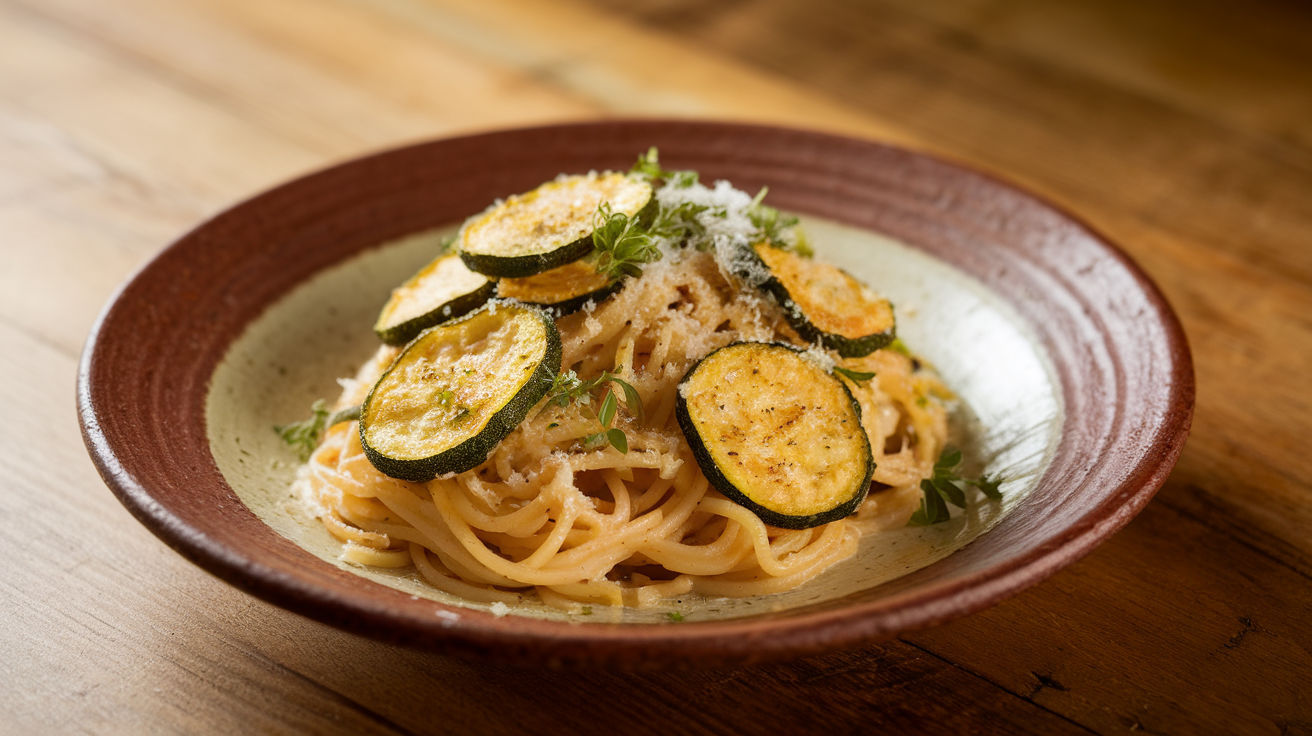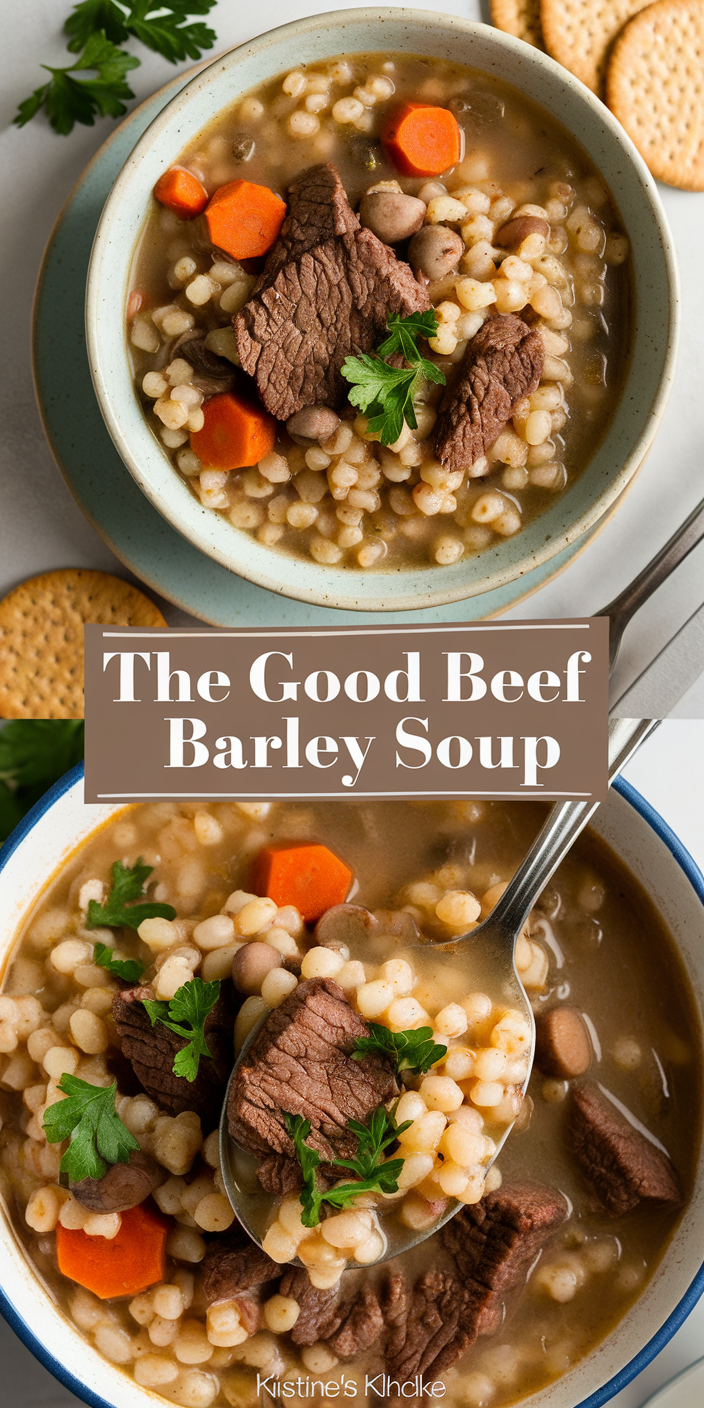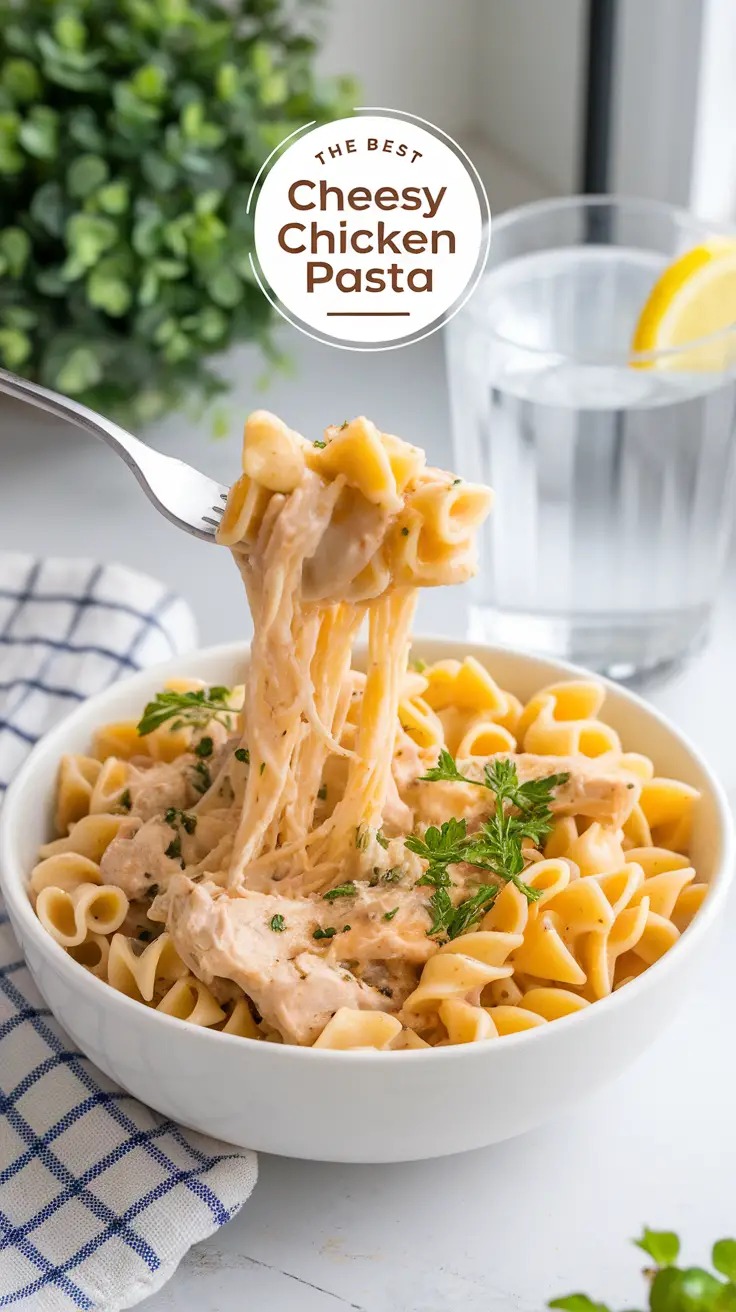Pasta has long been a symbol of comfort, tradition, and culinary delight. From the rustic kitchens of Italy to modern-day dinner tables worldwide, pasta dishes come in an endless variety of shapes, sauces, and flavors. Today, more than ever, people are seeking innovative, wholesome, and delicious ways to enjoy pasta, especially with a focus on whole plant based ingredients that are good for the body and the planet. Enter Spaghetti with Crispy Zucchini — a recipe that balances texture, flavor, and nutrition into one unforgettable plate.
In this comprehensive article, we will explore everything about this dish: from its ingredients and preparation to nutritional benefits, culinary tips, and how it fits perfectly alongside classics like the best lasagna recipe or a vibrant roasted red pepper pasta. Whether you’re a plant-based eater, someone who enjoys meal bowls, or a pasta lover curious to try a new twist on an old favorite, this recipe offers something special for everyone.
The Origins and Appeal of Pasta with Vegetables
Historically, pasta dishes have been dominated by meat-based sauces or creamy cheese blends. However, vegetables have always had a place in Italian cooking — think ratatouille, caponata, or simple grilled veggies on the side. Zucchini, a summer squash native to the Americas but popularized in Italy, is a common vegetable featured in Mediterranean dishes.
Combining zucchini with pasta is nothing new, but the idea of making the zucchini croustillant rather than soft or stewed adds a modern, textural innovation. The crispy edges provide an exciting contrast to the silky spaghetti, elevating a simple pasta dish into an amazing pasta experience.
This recipe highlights the trend of whole plant based eating, focusing on minimally processed foods, maximum nutrition, and delicious flavor. It’s a fantastic way to enjoy pasta without relying on heavy creams, cheese, or meats, while still feeling full and satisfied.
Why Choose Crispy Zucchini in Your Pasta?
Crispy zucchini offers several culinary benefits:
- Texture Contrast: The crunchy edges break the monotony of soft noodles and sauce.
- Caramelized Flavor: Roasting or pan-frying zucchini develops natural sugars, imparting a subtle sweetness and umami.
- Nutrient Boost: Zucchini is rich in vitamins A and C, potassium, and antioxidants.
- Lightness: Crispy zucchini adds volume and flavor without heavy calories.
Key Ingredients: The Heart of the Dish
Before we jump into the cooking process, let’s look at the essential ingredients that make this dish shine:
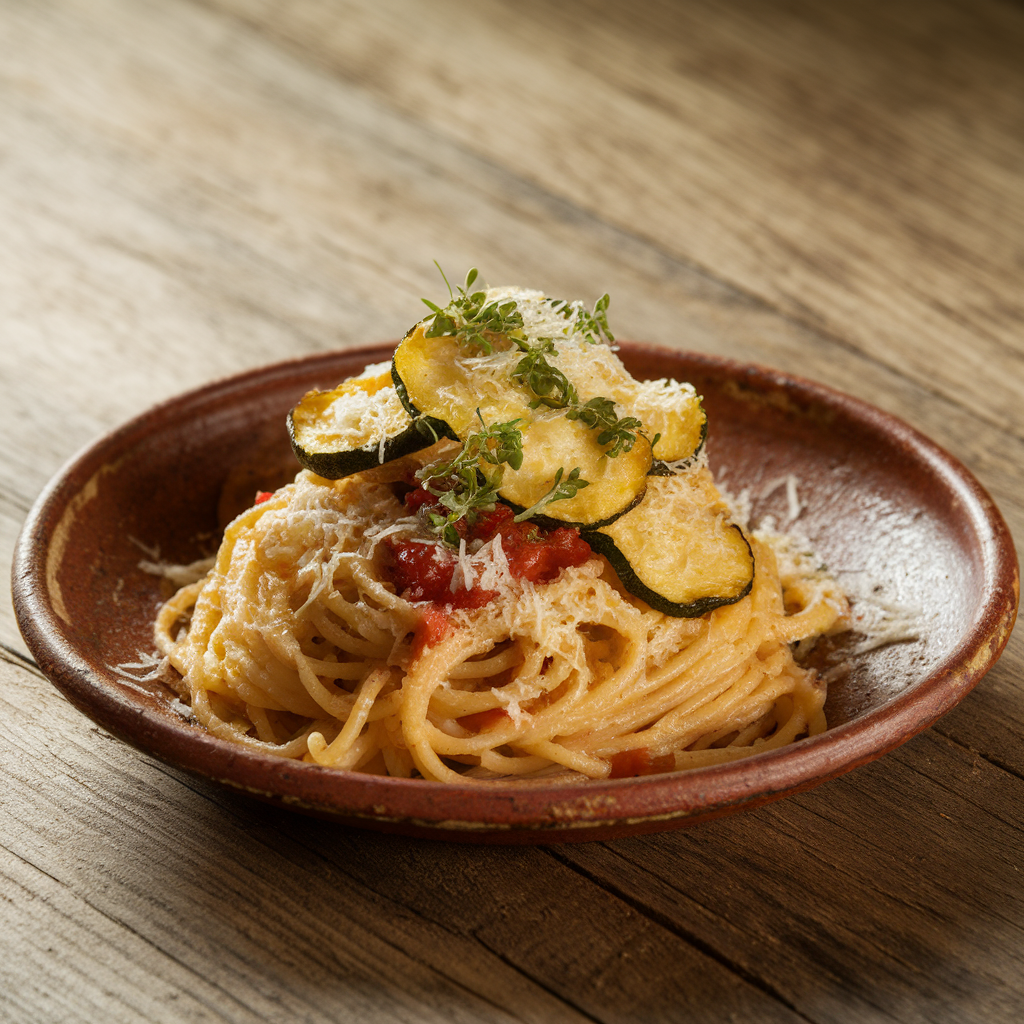
1. Spaghetti
Classic spaghetti noodles are a perfect vehicle for sauce and crispy veggies. Choosing whole grain spaghetti ups the fiber and nutrient content, fitting perfectly into a whole plant based lifestyle. For gluten-free diets, brown rice or chickpea spaghetti works beautifully.
2. Zucchini
Fresh zucchini is best — firm and vibrant green. Sliced thinly, it crisps up beautifully when roasted or pan-fried.
3. Olive Oil
High-quality extra virgin olive oil provides richness and depth. It’s also a heart-healthy fat staple of Mediterranean diets.
4. Garlic
Aromatic garlic adds a savory base note to the tomato sauce and the overall dish.
5. Tomatoes
Using fresh cherry tomatoes or good-quality canned diced tomatoes creates a vibrant, fresh sauce. The natural acidity balances the richness of the oil and crispy zucchini.
6. Fresh Herbs
Basil and oregano bring authentic Italian freshness and herbal complexity.
7. Seasonings
Salt, black pepper, and optional red pepper flakes for heat enhance all flavors.
8. Optional Toppings
Nutritional yeast or vegan parmesan add cheesy umami notes without dairy. Lemon zest brightens and lifts the whole dish.
Step-By-Step Recipe: Mastering Spaghetti with Crispy Zucchini
Step 1: Prepare the Zucchini for Crispiness
- Slice the zucchini into thin rounds or half-moons about 1/8 inch thick.
- Lay the slices on paper towels and gently pat dry. Removing moisture is key to crispiness.
- Toss with olive oil, salt, and pepper. Optionally, sprinkle with a pinch of cornstarch or breadcrumbs to intensify crunch.
- Spread in a single layer on a baking sheet lined with parchment paper.
- Roast at 425°F (220°C) for 12-15 minutes or pan-fry over medium-high heat in a non-stick skillet until golden and crisp, flipping halfway.
- Avoid overcrowding to prevent steaming.
Etape 2: faire Cuire les Pâtes
- Bring a large pot of salted water to boil.
- Cook spaghetti to al dente following package instructions.
- Reserve about ½ cup of pasta water before draining to help adjust sauce consistency.
Step 3: Make the Tomato Sauce
- In a skillet, warm olive oil over medium heat.
- Sauté minced garlic until fragrant, about 1 minute.
- Add tomatoes, herbs, salt, pepper, and red pepper flakes if desired.
- Let simmer gently, stirring occasionally, for about 10 minutes until sauce thickens slightly.
- Adjust seasoning and add reserved pasta water if needed.
Etape 4: Mélanger et Servir
- Toss cooked spaghetti in the tomato sauce, coating evenly.
- Gently fold in the crispy zucchini slices.
- Plate the pasta, sprinkle with nutritional yeast or vegan parmesan.
- Garnish with fresh basil leaves and a little lemon zest.
- Serve immediately for best texture contrast.
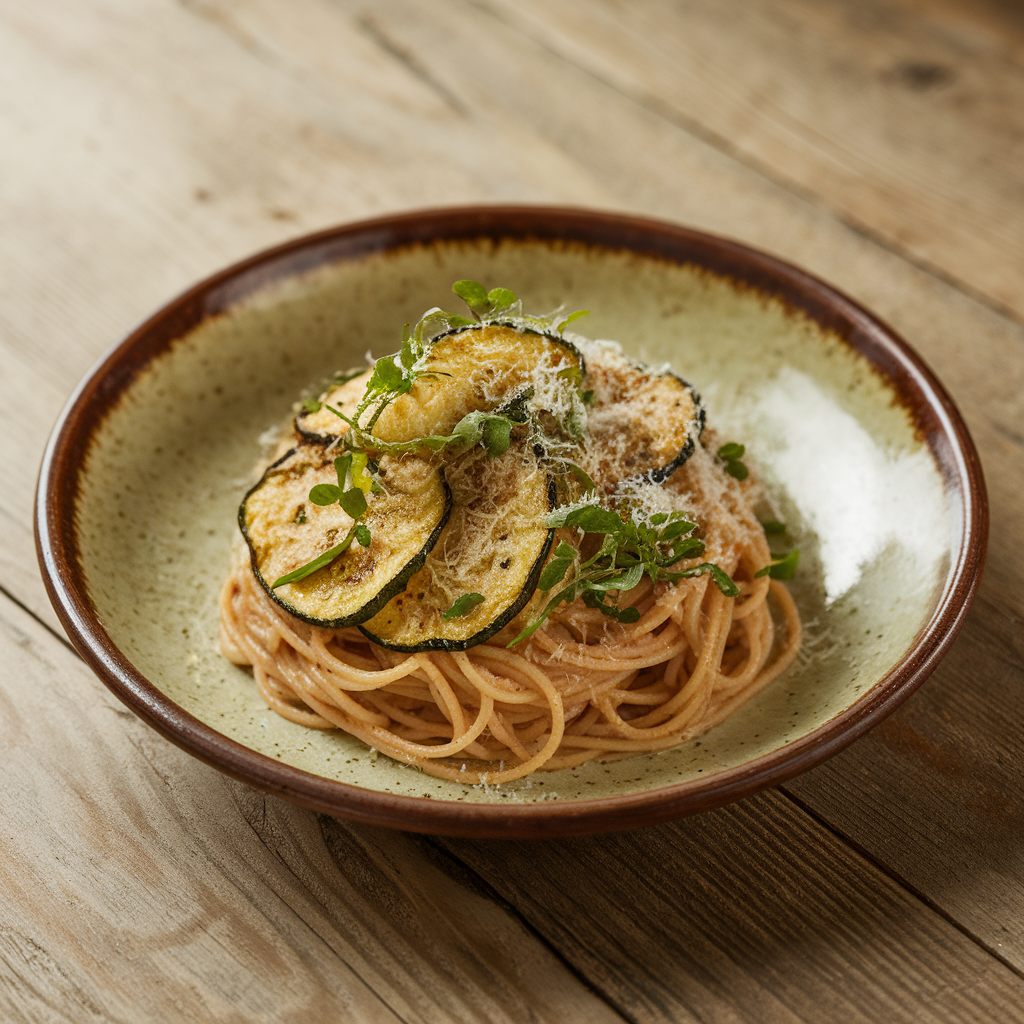
Nutritional Highlights: Why This Plant-Based Pasta Works
This recipe is an exemplar of nutritious, balanced eating:
- Low in Calories, High in Nutrients: Zucchini is low calorie but rich in antioxidants and fiber.
- Heart-Healthy Fats: Olive oil contributes monounsaturated fats beneficial for cardiovascular health.
- Complex Carbohydrates: Whole grain pasta provides sustained energy release.
- Rich in Vitamins and Minerals: Tomatoes bring vitamin C, potassium, and lycopene — linked to reduced cancer risk.
- Plant Protein and Fiber: Though light, this dish supports digestion and satiety.
For those wanting more protein, try pairing the pasta with a side of beans, lentils, or adding toasted nuts into the meal bowl.
Delicious Variations to Try
Add Meat or Meat Alternatives
- Pour les fans de pasta with meat, incorporate ground turkey, chicken, or beef browned with garlic and herbs.
- For plant-based protein, sauté mushrooms, tempeh, or crumbled tofu alongside zucchini.
Swap Pasta Types
- Use gluten-free pasta like quinoa or chickpea spaghetti for dietary restrictions.
- Try spiralized zucchini noodles for a low-carb take, although you’ll lose the crispy contrast.
Flavor Boosts
- Add roasted red peppers for a sweet smokiness — reminiscent of a roasted red pepper pasta sauce.
- Incorporate olives or capers for briny notes.
- Top with toasted pine nuts or walnuts for crunch.
Make It a Meal Bowl
Layer the spaghetti and crispy zucchini with fresh greens, roasted chickpeas, avocado slices, or pickled onions to create a hearty meal bowl that’s satisfying and balanced.
Pairing with Other Italian Favorites
This dish shines both solo and as part of a larger Italian meal. Pair it with:
- Best Lasagna Recipe: Try a vegetable-packed lasagna with layers of spinach, mushrooms, and vegan béchamel for a cozy contrast.
- Roasted Red Pepper Pasta: Creamy and smoky, this sauce complements the fresh, crispy zucchini flavors.
- Garlic Bread or Focaccia: Adds texture and richness to round out the meal.
Tips for Perfect Crispy Zucchini Every Time
- Dry Before Cooking: Always pat dry zucchini slices to remove moisture.
- Single Layer Cooking: Space zucchini pieces apart to crisp rather than steam.
- High Heat: Use high oven temperature or medium-high stove heat.
- Oil Quality: Use good quality olive oil for flavor and better crisping.
- Season After Cooking: Salt draws moisture, so season just before or after cooking.
- Optional Coatings: Lightly dust zucchini with breadcrumbs, cornmeal, or nutritional yeast before cooking for extra crunch.
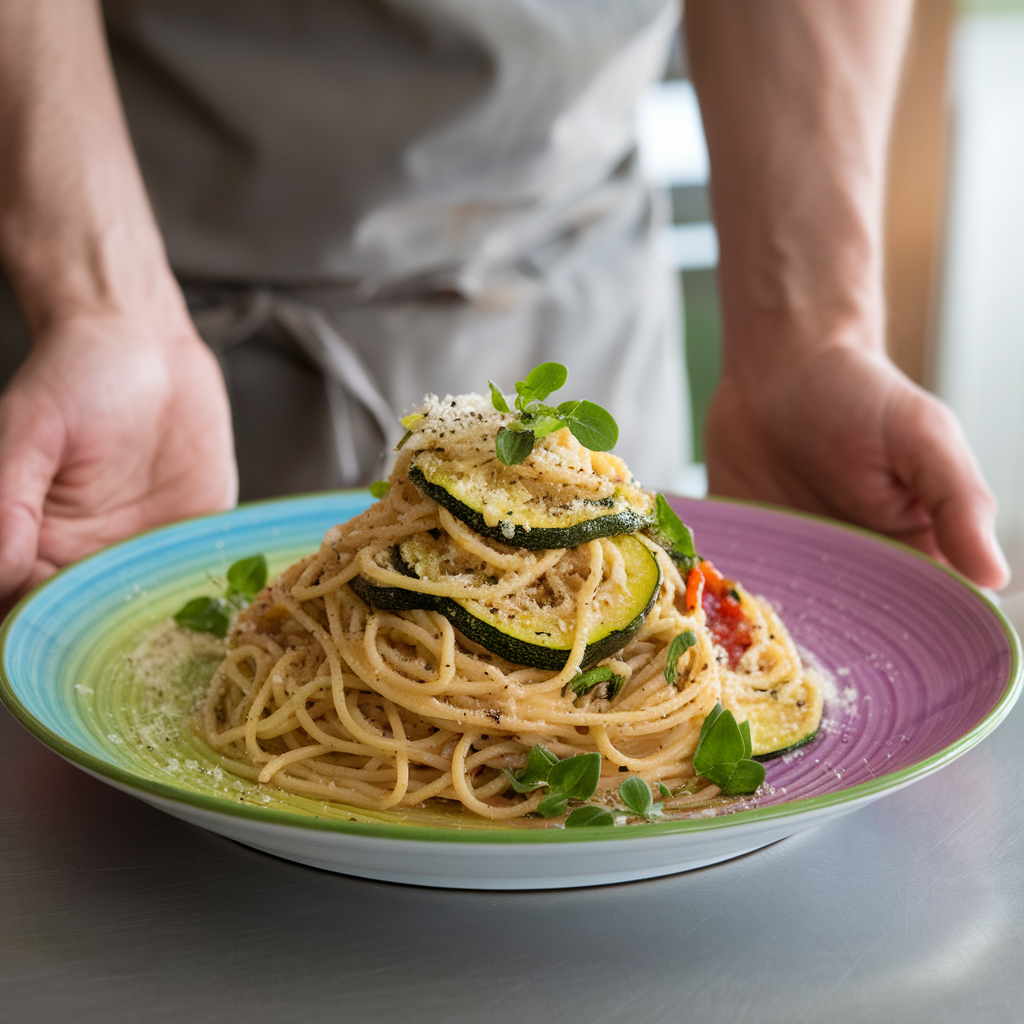
Foire Aux Questions
Can I prepare this recipe ahead of time?
It’s best served fresh for maximum zucchini crispiness. You can prep the sauce and zucchini separately ahead, then combine right before serving.
Is this recipe gluten-free?
Use gluten-free pasta to make the entire dish gluten-free.
Can I use frozen zucchini?
Fresh zucchini works best for texture. Frozen zucchini tends to be watery and will not crisp well.
How can I make this recipe higher in protein?
Add plant-based protein like lentils, chickpeas, or vegan meat crumbles. Toasted nuts or seeds also add protein and texture.
The Bigger Picture: Whole Plant-Based Eating and Pasta
Adopting whole plant based eating means focusing on minimally processed plant foods: vegetables, fruits, grains, legumes, nuts, and seeds. Pasta dishes like this fit perfectly within this paradigm, proving that plant-based meals can be exciting, tasty, and deeply satisfying.
It also helps reduce environmental impact by shifting away from resource-intensive animal agriculture. This recipe offers a delicious entry point to a more sustainable diet without sacrificing the comfort of pasta.
Final Thoughts: Why You’ll Love This Recipe
- It combines the familiar with the innovative: classic spaghetti with a crispy vegetable twist.
- The ingredients are accessible, affordable, and easy to prepare.
- It’s customizable to suit your dietary needs, taste preferences, and available ingredients.
- It highlights the joy of plant-based cooking with texture, color, and fresh flavor.
- It pairs beautifully with other Italian dishes, from the best lasagna recipe to a smoky roasted red pepper pasta.
